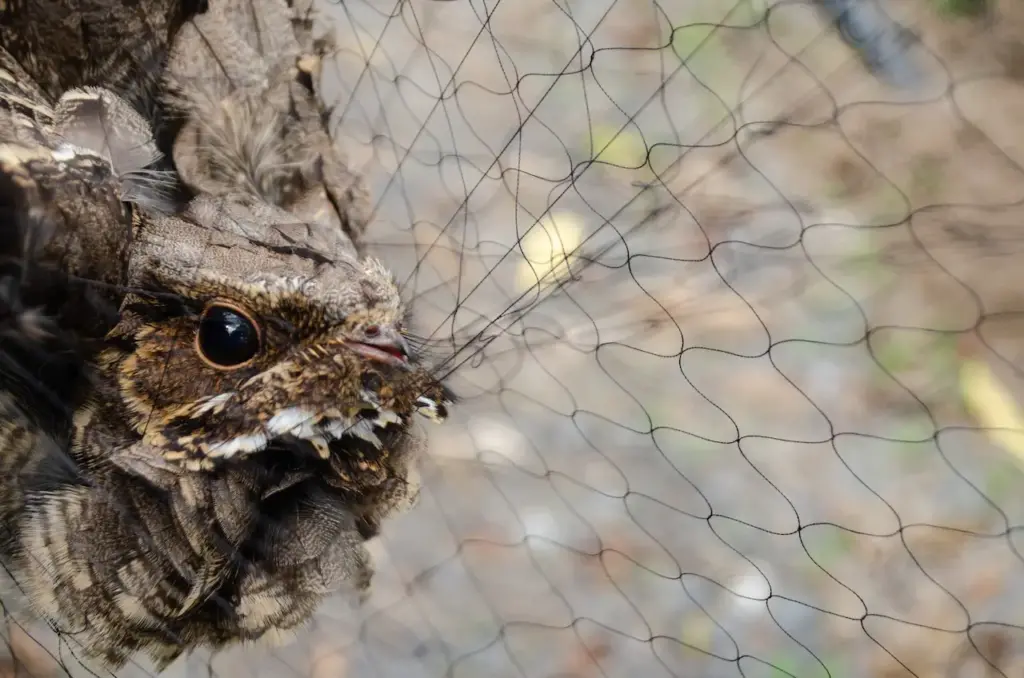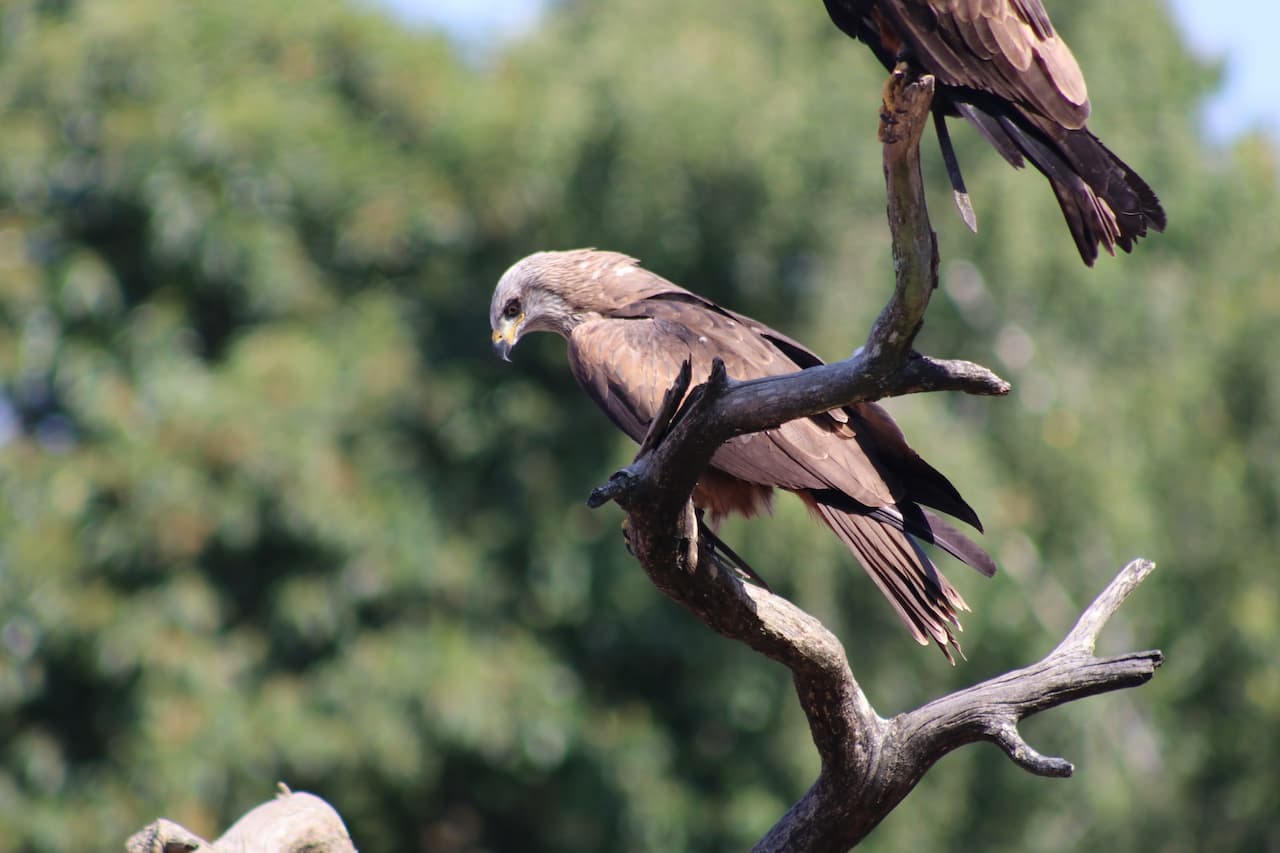White-tailed Nightjars
White-tailed Nightjars
The White-tailed Nightjars (Caprimulgus cayennensis) – also known as Cayenne Nighthawks, Cayenne Nightjars, or Stenopsis Nightjars – occur naturally in tropical America – from Costa Rica in Central America, south to Paraguay in South America, including some Caribbean islands.

They are sometimes referred to as goatsuckers, as they were often seen in fields together with goats and sheep, and the myth was born that they were there to suck milk from the teats of goats (the Latin word for goat-sucker or goat-milker is Caprimulgus). However, instead, they fed on the insects that were attracted to livestock. In the past, night-flying birds – such as the nightjars – were suspected of witchery.
The nightjar, as suggested by the name, is strictly nocturnal. Throughout the day, it typically rests quietly in densely vegetated hiding places. At night, they become active as they hunt flying insects in more open landscapes, such as forest clearings, wetlands, and along rivers.
Their cryptic appearance enables them to blend perfectly into their habitat. Hence they are very difficult to spot during the daytime, when they are usually hidden away sleeping.
These nightjars are most easily detected at night when light from car headlights is reflected ruby-red from their eyes, as they are sitting on roads or tracks. But typically, their presence is most often made known by their loud calls given at dusk.
Distribution / Range
Chinese: ???? … Czech: Lelek beloocasý, lelek b?loocasý … Danish: Hvidhalet Natravn … Dutch: Witstaartnachtzwaluw, witstaart nachtzwaluw … German: Weißschwanz-Nachtschwalbe … Estonian: valgesaba-öösorr … Finnish: Valkopyrstökehrääjä … French / Creole French: Engoulevent cohé, Engoulevent coré, Cohé, Coré …Italian: Succiacapre codabianca, Succiacapre della Cayenna …Japanese: ojiroyotaka … Norwegian: Hvithalenattravn … Papiamentu (language of the Caribbean ABC islands): bati-bati, para karpinté, tapa kaminda … Polish: lelek bialopregi, lelek bia?opr?gi … Portuguese: Bacurau-de-cauda-branca … Russian: ??????????? ??????? … Slovak: lelek bielochvostý … Spanish: Chotacabra Blanca, Chotacabras coliblanco, Chotacabras Ñañarca, Guabairo Coliblanco, Guardacaminos Rastrojero … Swedish: Vitstjärtad nattskärra
Distribution / Range
The White-tailed Nightjars are mostly sedentary (non-migratory).
The White-tailed Nightjars are native to:
Anguilla; Antigua and Barbuda; Aruba; Barbados; Brazil; Colombia; Costa Rica; Dominica; Ecuador; French Guiana; Guadeloupe; Guyana; Martinique; Montserrat; Netherlands Antilles; Panama; Puerto Rico; Saint Kitts and Nevis; Saint Lucia; Saint Vincent and the Grenadines; Suriname; Trinidad and Tobago; Venezuela

They are vagrants to:
Puerto Rico.
Preferred habitats
They occur at altitudes from 0 – 10,500 feet (0 – 3,200 meters)
- subtropical or tropical seasonally wet or flooded lowland grassland
- Open grassland with scattered vegetation
- dry savanna
- dry shrubland
- heavily degraded former forest.
- forest edges
They typically avoid forests.
Status
This species is described as “fairly common” within its range (Stotz et al. – 1996).
Recognized Subspecies and Ranges
-
- Caprimulgus cayennensis cayennensis (J. F. Gmelin, 1789) – Nominate Race
- Range: East central and northeastern Colombia east through Venezuela, the Guianas and probably extreme northern Brazil.
- Caprimulgus cayennensis albicauda (Lawrence, 1875)
- Range: Southeastern Costa Rica east to northwestern Colombia.
- Caprimulgus cayennensis apertus (J. L. Peters, 1940)
- Range: Western Colombia south to extreme northern Ecuador.
- Caprimulgus cayennensis insularis (Richmond, 1902)
- Range: Extreme northeastern Colombia, northwestern Venezuela and nearby islands (Margarita Islands and islands of Curaçao, Aruba and Bonaire).
- Caprimulgus cayennensis manati (Pinchon, 1963)
- Range: Martinique(Lesser Antilles)
- Caprimulgus cayennensis leopetes (Jardine and Selby, 1830)
- Range: Trinidad, Tobago, Bocas Is and Little Tobago
- Caprimulgus cayennensis cayennensis (J. F. Gmelin, 1789) – Nominate Race
Description
The White-tailed Nightjars average 7.9 – 8.7 inches (20 – 22 cm) in length, including the ~ 4.7 inch (12 cm) tail. They weigh about 1.4 oz (40.5 grams).
The upper plumage is mostly grey-brown with black-brown streaks. They have a broad buff collar. The wings are wings grey-brown densely spotted white and buff. The bill, legs and feet are blackish.
The male can be identified by the white bar across his outer wing feathers and a mostly whitish-brown tail.
The female lacks the white markings on the wings and tail.
They have developed several behavioral adaptations to minimize predation:
- Their nocturnal (night) lifestyle reduces the likelihood of being detected by daytime predators. During the daytime, they typically sleep on the ground where they are perfectly camouflaged by their “earthy” colored plumage. They almost always change their roost sites on a daily basis.
- When nesting, they sit quietly on the eggs, minimizing any movements that could get them detected.
- If an intruder does get close to the nest, the parents may try to lead them away by first flushing off the nest and when landing feigning injury as they lead the potential thread away from the nest. While the parent performs this distraction display, the young may scatter and freeze.
- The parent who is not incubating the eggs or brooding the young will roost away from the nesting area.
- They may also move the eggs or young to prevent them from being preyed upon.
- Nightjars avoid voicing when they hear the calls made by predatory nocturnal animals, such as owls.
Nesting / Breeding
The male establishes his territory and sings at night to keep rivals away and at the same time to attract a female.
White-tailed Nightjars don’t actually construct a nest, as most other bird species do. They simply place the eggs on the ground on open soil, in rough grass, vegetated gravel, sandy grounds and bare stony ground with vegetation nearby.
Nesting appears to be timed in such a way that the moon is more than half full at the time they are feeding their young – likely as the additional light during the night facilitates caring for the young and foraging for food.
The female may lay one to two eggs (mostly two) that are whitish or creamy in color, with brown and grey spots or blotches. Each egg measures 0.9 – 0.7 inches (23 x 17 mm).

During the day, the incubation of the eggs is undertaken by the female, while both parents share the incubation at night. The incubation period is about 19 to 21 days.
The hatchlings are covered in down. Within 24 hours of hatching, they are capable of short-distance movements. They often move apart shortly after hatching, and/or the parents shove them apart as they flush the nest. This may be to make it more difficult for predators to spot them. The male generally guards and defends the nest and the young.
He is often seen hovering in place near the nest with his body in a nearly vertical position. The parents communicate with their young via soft clucking sounds to which the chicks respond. If one of the parents is flushed from the nest, it feigns injury to distract the predator away from the nest.
The parents feed the young regurgitated food (insects), and they continue to brood them until fledging. The chicks often take their first flight when they are about 20 to 21 days old.
They usually only raise one brood a season. However, if conditions are favorable, the female may lay a second clutch close to the first and while she is incubating the new set of eggs, the male continues to care for the young from first brood.


